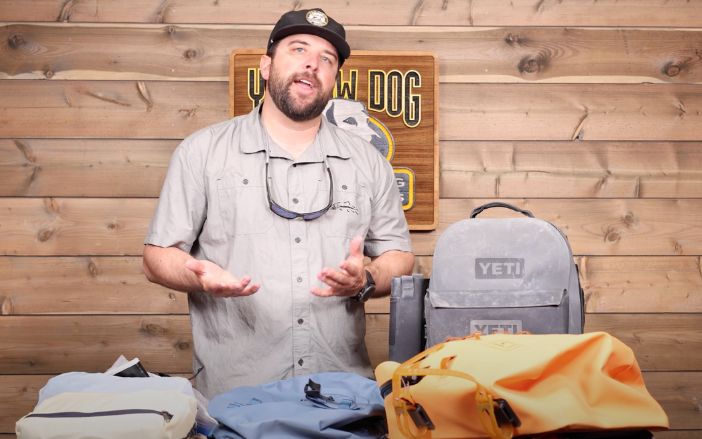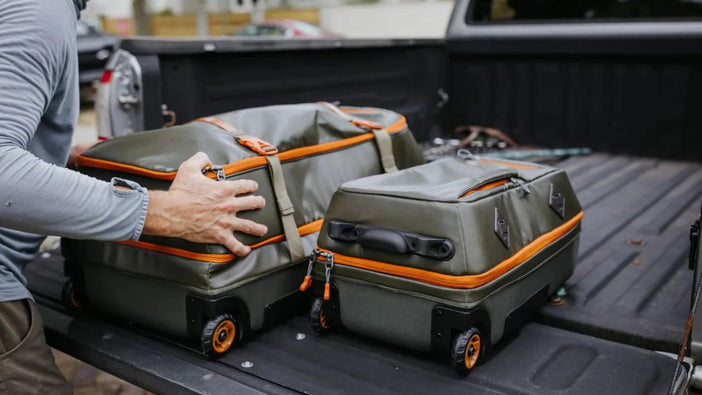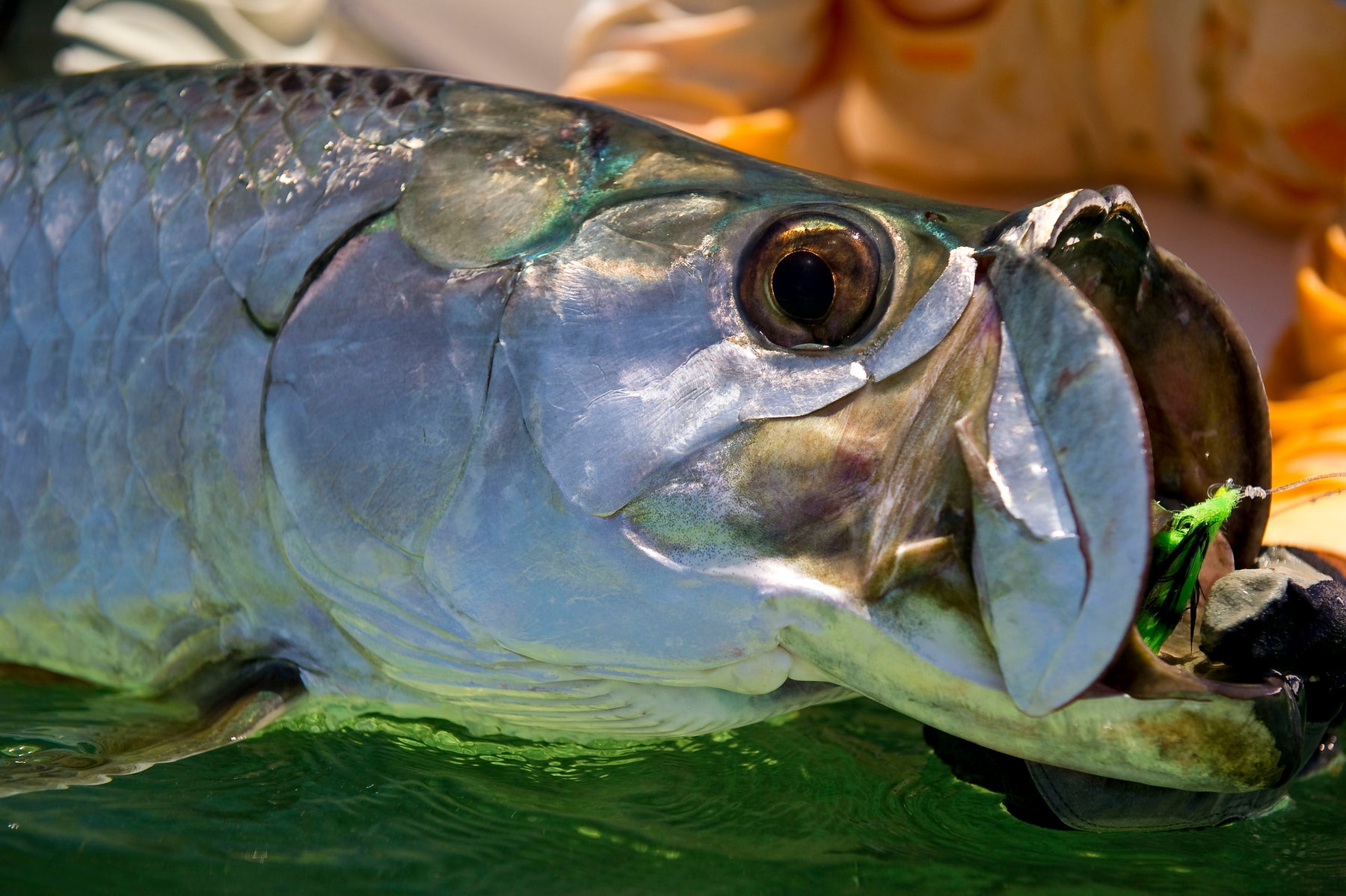Take a minute and check out an incredible article written by Yellow Dog's close friend and legendary tarpon angler Stu Apte.
Fly fishing for tarpon on the flats requires a certain skill level that in many ways, is different than most other types of fly fishing. The most important elements of presenting a fly to tarpon revolve around speed and accuracy. If you’re someone who is new to saltwater fly fishing, you will definitely want to spend time practicing your casting before attempting to fish the flats for big tarpon.
Casting to Giant Tarpon
A typical tarpon fishing scenario might have you standing on a casting platform for hours, holding your rod with one hand, the fly in the fingers of your other hand, and waiting for that one opportunity. All of a sudden the guide excitedly whispers, "There she is … 11 o'clock … 60 feet. Make the cast! Drop it right in front of her face. Now! NOW!" At that exact moment, your legs turn to jelly, your hands start shaking, and you feel like you're going to be sick to your stomach. You not only forget how to properly release the fly from your fingers with a roll cast, but you also rush your cast. The fly lands in a pile of line 20 feet from the boat, and the fish is gone.

In order to prevent this from happening, it is important to PRACTICE your total presentation before you find yourself in pressure situations. Whenever possible it's always best to practice on the water, but if there’s no water around, then any grassy area will suffice.
- Start by having the leader and ten feet of fly line out of the rod tip. Strip more line off the reel and lay it in a neat pile near your feet. Begin by practicing a roll cast, pulling the fly from your fingers without letting the fly hit the ground or water.
- As the fly reaches the end of the forward roll cast, start a sharp back cast, stopping the rod near the vertical to create a reasonably tight loop. At the proper moment, let a small amount of line pull from your fingers, “shooting” out a small amount of additional line on your backcast. What this does is help add “weight” to the cast, loading and bending the rod which will, in turn, help you shoot enough line on the forward cast to make that 50 or 60-foot presentation.
- When executed properly, you can make this cast even without a full false cast. Remember that while distance certainly is a factor, the average cast is rarely longer than 55 to 60 feet, with most big tarpon hooked within 40 feet of the boat.
Presenting and Stripping Flies
When delivering a shot on a tarpon, it is necessary to cast your fly close enough for the tarpon to see it, but not so close as to spook it. Often both the fish and the boat are moving, so it is very important to recognize and understand the relative motion. You also need to account for the speed and the depth of the moving fish. Whenever possible, the best presentation will have the fly – once you begin stripping – being pulled away from the fish, at the very least at an angle.
The worst presentation you can have involves the fly coming directly at the fish. Another piece of advice is to have your tackle fully rigged and the fly you intend to use attached to your leader BEFORE you arrive at the fishing area. The reason your guide is taking you to an area is that he expects to find tarpon there. If you arrive and you're not immediately ready, you may miss the best shot of the day.
All of these factors – fast and accurate casting, the proper presentation and stripping of the fly, and having your equipment rigged and ready – are the constants involved in this kind of fishing.
All of the additional factors will, of course, vary based on conditions. For instance the size, color, and the shape of the fly you use will depend on the water clarity; larger, dark patterns in murky water and smaller, light-colored patterns in crystal-clear water. When conditions are windy, you can generally make a much closer presentation on a fish. In deeper water, you can fish larger flies. If you're fishing over a white sand bottom, fish small, light-colored flies. Over a dark grass bottom, fish a darker variation of the same flies.
After decades of chasing tarpon around the world, my personal rule of thumb is to control the basic “black-and-white” factors whenever possible. Put your time in when practicing, arrive ready, rig your rods correctly, and have everything set and ready to go. Control what you can; because once you're out on the flats, everything else becomes grey. At that point, you literally have to be ready for anything, especially when you’re hunting for that fish of a lifetime.
- Stu Apte
Get Ready For Your Next Tarpon Trip
+ Shop Our Tarpon Flies
View All Of Yellow Dog's Tarpon Destinations
Related Articles
Best Tarpon Flies For Worldwide Tarpon Fishing
Fly Fishing For Tarpon Tips: Beginners And Novice
Juvenile vs. Migratory Tarpon Fly Fishing Guide



























